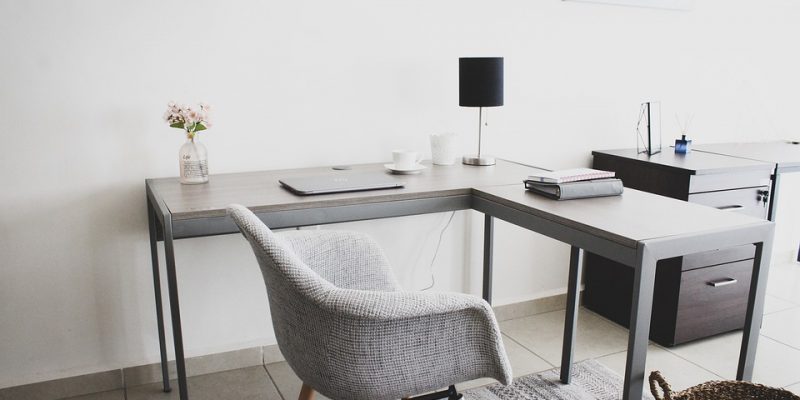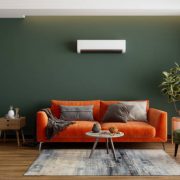The age of remote-work reality is here. More people are joining the work from home (WFH) movement not just because they have been forced by circumstance but mainly because of the advantages they get from the setup.
Besides a chance to achieve a better work-life balance, the remote setup also empowered people to designate a space where they can be most productive. And most of the time, it’s within the comforts of their own homes.
Want to work more comfortably in this new workspace norm? Try out these six cozy home office design tips to improve your workspace away from the office:
1. Choose the right area for your workspace.
A comfortable work office design begins with the right choice of space. When assigning an area for your home office, you must remember two important things:
Delineate your office from the rest of your home.
Delineating your home office creates separate areas for work and rest. This way, you’ll be able to switch between your “productive mode” and “resting mode” based on where you are in your home.
Having a dedicated workspace also fosters discipline and prevents distractions.
The easiest way is to use a separate room for this purpose. But if this is not possible, you can also divide a larger space – like your bedroom or living room – using an interior partition or furniture to mark the spot. The goal is to clearly define the area dedicated for working.
Pro Tip: Bookshelves are excellent dividers and can even provide additional storage for your home office.
Select an area that enables focus.
While it’s wise to use an underused space for your home office, it must still meet one important criterion: focus support.
After all, what use is a separate workspace if it doesn’t let you concentrate on what you’re supposed to do?
To start, check if the space has the following key elements:
- Natural lighting to prevent eye strain.
- Air circulation for comfort and health.
- Good height to maintain proper posture.
- Potential for storage to keep clutter at bay.
2. Use fabric optimally
Fabrics bring warmth into any room, including your home office. From curtains and drapes to rugs and carpets, these can all be just what your space needs to feel cozier and more comfortable.
But instead of focusing on fabric décor (which might be a bit too distracting for your remote office), consider adding an area rug and curtain. Having upholstered furniture is also good.
Replace any heavy drapes with sheer curtains that let air and light inside the room.
If you have the budget, you can also have the room carpeted from wall to wall. A fully carpeted floor offers certain benefits besides comfort, like sound absorption and temperature regulation.
As a bonus, wall-to-wall carpets, like those included in the Beta Vienna floor covering collection, also look sophisticated and help achieve the office aesthetic better.
3. Pick color schemes for focus and productivity.
When choosing colors to use for your home office, make sure you keep productivity in mind. Avoid distracting color schemes that can steer you away from what you’re supposed to accomplish or affect you in any way that would hinder productivity.
Try hues that boost energy in the room, like pale green and yellow. However, never overuse yellow (and orange) as too much of these colors can add nervous energy you wouldn’t want in the room.
Use the psychology of color as a guide when coming up with a color scheme for your home office. The following list features common colors and what they signify:
- Red – leadership, perseverance, and passion
- Orange – power, energy, and tolerance
- Purple – idealism, sensuality, and excitation
- Pink – friendliness, maturity, and femininity
- Yellow – dexterity, originality, and intelligence
- Green – progress, stability, and nature
- Gray – realism, sanity, and sophistication
- Light blue – calm, relaxation, and reliability
- Brown – reliability and common sense
- White – openness, integrity, and ease
- Black – foresight and creation
- Blue – idealism, subordination, and steadfastness
4. Bring in natural greenery.
Some people find themselves feeling walled in and barred when working from home, no matter how many open windows the room has.
If you’re still getting used to a permanent WFH setup, you may want to make your workspace as outdoorsy as possible. One way to do that is to bring live plants inside.
Live greenery enlivens the space. They also purify the air and help reduce feelings of stress and anxiety.
Indoor foliage is also believed to boost cognitive function and productivity, not to mention enhance creativity, when placed in an office.
Some of the live plants you should consider are:
- Bonsai trees
- Herbs
- Peace lily
- Spider plant
- Pothos
- Cacti and succulents
To make them an integral part of the interior design, focus your furniture around the plant.
And try to be strategic about what plants you choose and how you arrange them in the room.
Place those that need more sunlight close to a south-facing window or door. If this isn’t available, you can always buy UV lights to keep the plant healthy or simply select plants that don’t need as much light.
5. Choose warm lighting.
Good lighting offers many advantages in the remote work setup. For one, a well-lit office keeps you alert and focused. It also reduces eye strain that could lead to headaches, blurry vision, and dry eyes.
Of course, you should still be picky when shopping for overhead lights and table lamps in Dubai. Choose warm-colored lighting that looks a lot like natural light.
Also, steer clear of fluorescent lights that make those distracting ticking sounds.
6. Opt for ergonomic office furniture.
Ergonomic furniture is always a good choice for a home office. These pieces adapt to your comfort and support overall muscle and bone function.
These also help reduce the risk of musculoskeletal issues like back, joint, and neck pains and promote optimal blood circulation.
When looking for the best ergonomic pieces for your workspace at home, check if the furniture:
- Enhances rather than restricts natural movement.
- Keeps the spine in the relaxed “S” position rather than forcing it into the “C” posture.
- Encourages physical movement where possible.
- Reduces strain on the joints, muscles, and bones.
- Can be adjusted based on an individual’s unique needs.
- Prioritizes usability and function over aesthetics.
Many excellent ergonomic furniture also come with special features, such as:
- Height control
- Pivotal and filtered screens
- 180-degree chair arm adjustments
- Weighted mechanisms for added natural support
- Temperature regulation
Work Comfortably at Home
The work-from-home arrangement is a dream come true for a lot of people. To make this setup work for you, you need a workspace where you can perform your tasks more comfortably.
Follow the home office design tips listed here and become more productive than you ever were before.
AUTHOR BIO
James Prathap is the General Manager at NGC Nafees, one of the leading distributors of wallpapers, floorings, and fabrics in the Middle East and South Asia. Formed three decades ago, the business also offers high-quality panoramics, coordinated fabrics, and creative stickers for residential and commercial projects.




















